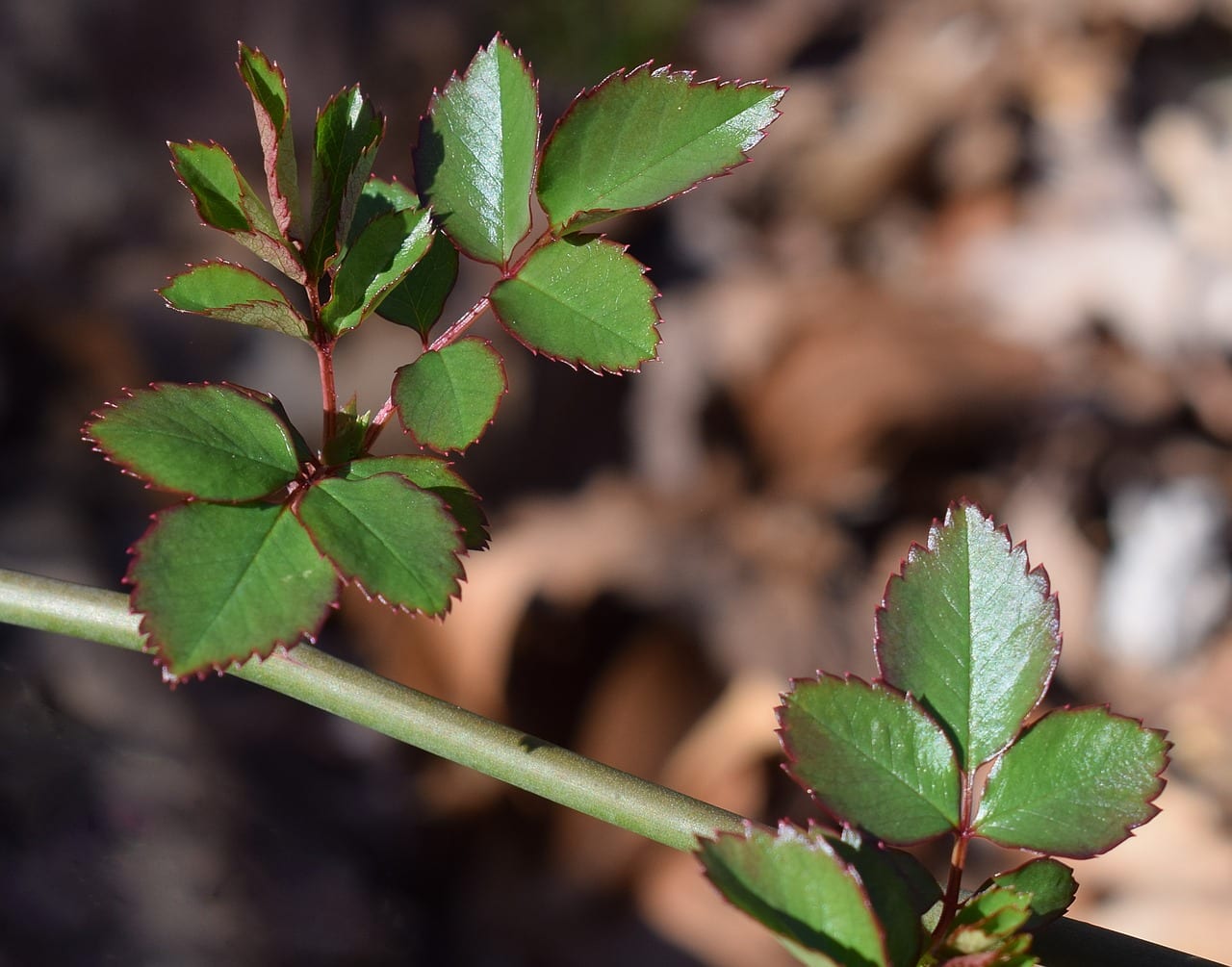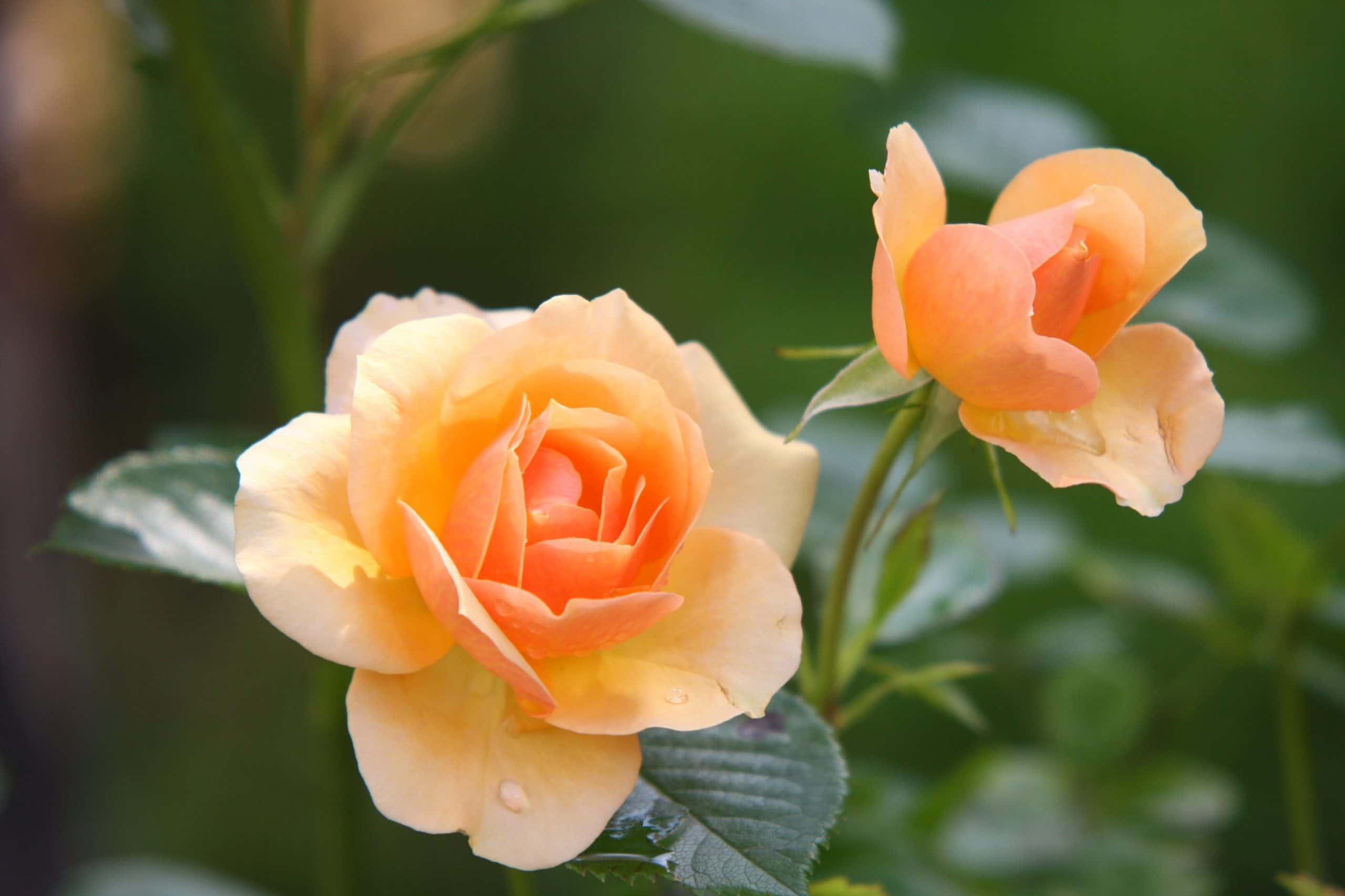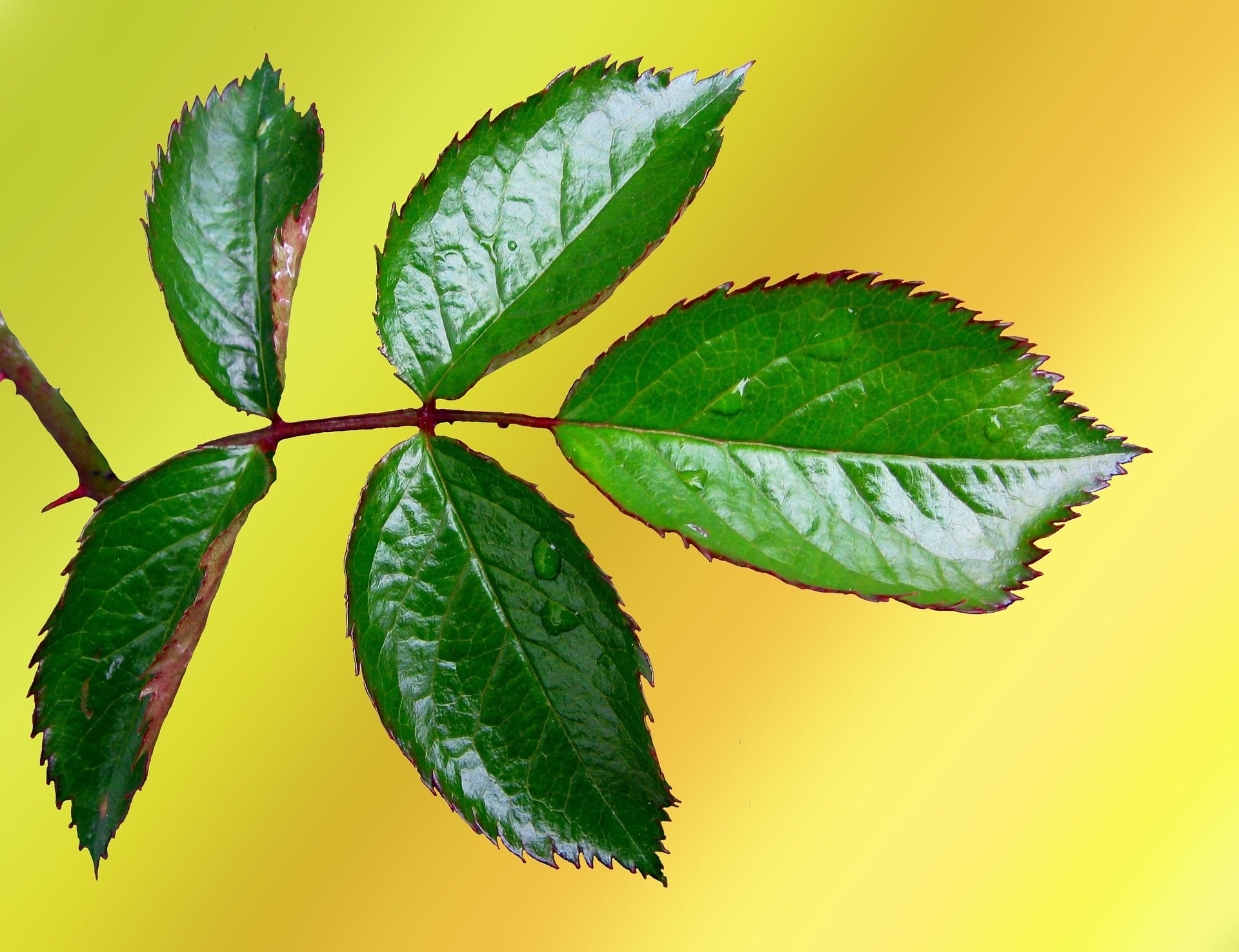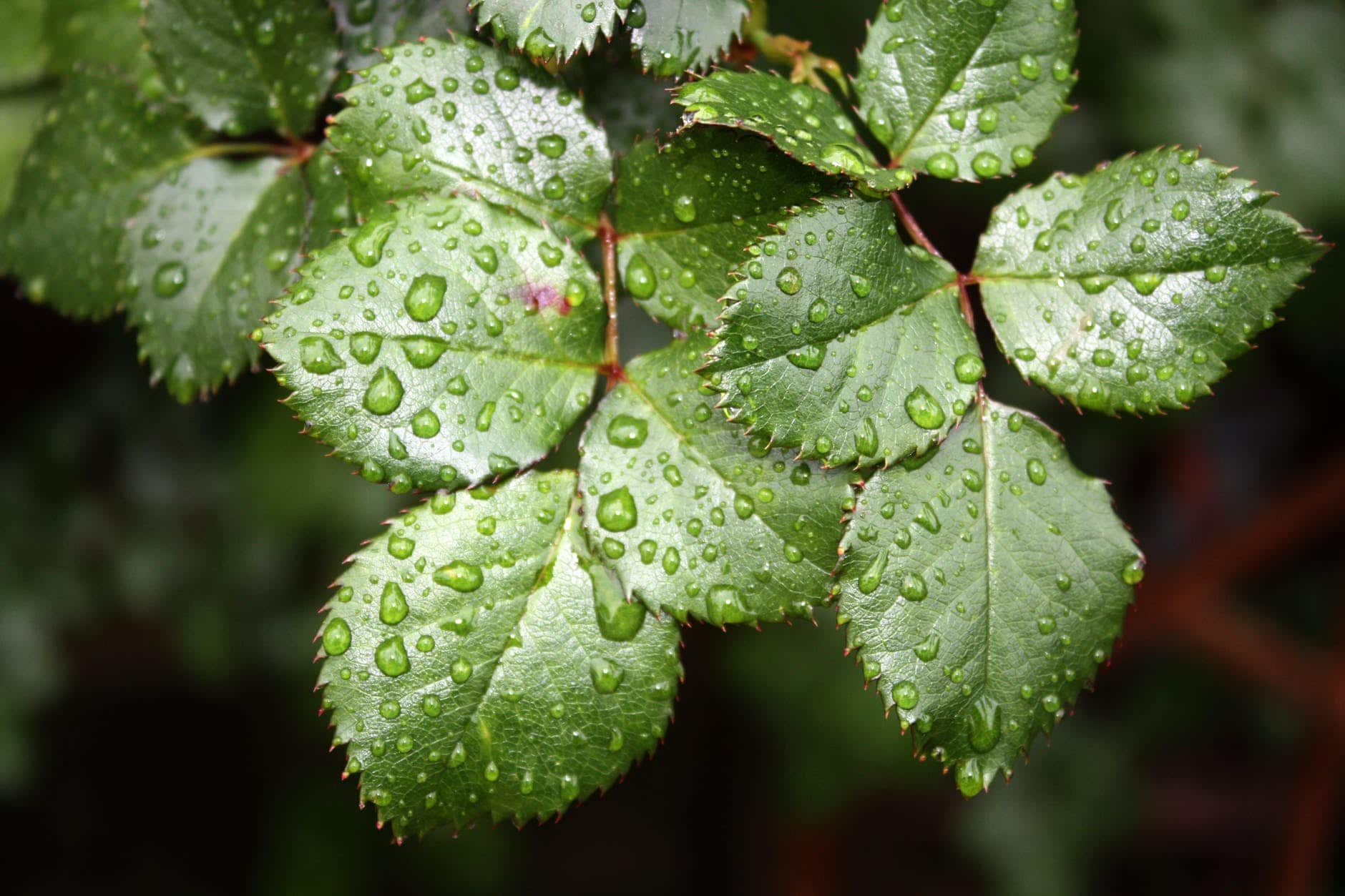
The rose bush is by far the best known and most loved flowering shrub. It can be grown in a wide variety of climates as long as the winter temperature approaches or drops a little below zero degrees, and it is also so ornamental and so easy to care for that it seems incredible that it is a real plant and not an artificial one.
Now, Do you know what the leaves of roses look like? If you have doubts, we invite you to continue reading 🙂.
What is and what are the parts of a rose?

Un rosebush It is a plant of the botanical genus Rosa that is composed of about 100 thorny shrubby species of which there are some that are climbers. It grows naturally in Europe, North America and North West Africa, but today it is easy to find a specimen almost anywhere in the world (except at the poles, of course 🙂).
It can reach a height between 2 and 20 meters, depending on whether it has climbing habits or not, and produces a large number of flowers during a good part of the year of very varied colors: white, red, pink, yellow, orange, purple, bicolored, ... These can be aromatic or not, although the Most do give off a very pleasant aroma.
The fruit is the so-called rose hip, which is a type of infrutescence composed of numerous separate nuts enclosed in the hypanthium, which is a kind of fleshy 'shell' with a very striking reddish color.
How are the leaves of the rose bushes?

The leaves of the rose bush are very characteristic, but as it often happens to us when we get very used to seeing something, we could ignore some details that make them unique. So, let's see what are those most important aspects of the foliar parts of this wonderful plant:
- Conclusion odd-pinnate, that is to say, that several pines or leaflets (small leaves) in odd number sprout from the same stem.
- The edge is saw shaped, that is, it looks like toothed, reddish in color when young.
- They may be deciduous or perennial. The vast majority of species and cultivars that we will find for sale in temperate regions will be deciduous, that is, they will drop their leaves at some time of the year (in autumn-winter), but there are others, such as the sempervirens rose or the pink banksiae that will gradually lose them throughout the year, as new ones sprout.
- They are colored Verde.
How do you know what disease or problem you have by looking only at the leaves?
Rose bushes are quite easy to care for shrubs or climbing plants, as they only need sun, plenty of water and pruning at the end of winter and pinching in spring-summer which will consist of cutting off the withered roses. But the truth is that when they are watered excessively, or the land or the climate is not suitable, they can be affected by some diseases, pests or disorders.
Fortunately for us, just by looking at the leaves we can already intuit what is happening to them. For example:
- Overwatering / waterlogging- The lower leaves turn yellow and fall, and the new ones turn brown.
- Lack of irrigation: the newer leaves turn yellow and / or dry, in addition -all- can curl, or become limp.
- Lack of light: the leaves lose color and shine.
- Bad plantation: If the roots were manipulated a lot, some leaves will fall before their time.
- Fertilizer excess: yellow and / or reddish burns on the leaves, which will fall.
- Iron deficiency: it is not usual, but if the leaves turn yellow leaving the nerves green, it is due to iron chlorosis.
- Hail: The appearance of reddish or black spots on the leaves after a frost or hail is common when the plant has not been in its new location for a short time.
- Pests: if you see that they have fine cobwebs (for the Red spider), tiny bugs on the underside of leaves (Mites o aphids), cottony-looking insects on leaves (cottony mealybugs), or any other symptom that makes you suspect, without a doubt even treating them with the corresponding insecticide.
- Management: the appearance of black or whitish spots that are spreading on the leaves, may be signs of fungi, which are treated with fungicide.

So are the leaves of the rose bushes, very interesting not only so that the plants are more beautiful, but they are also very useful to determine what problem they have. What did you think of this topic?